It is possible to prepare a strong remineralizing toothpaste recipe at home that is approved by dentists. Approved by dentists. Made with five natural ingredients that help your mouth heal. It makes enamel firmer, plaque-fighting, and naturally desensitizing. However, it is an effective DIY toothpaste for sensitive teeth that also addresses the root cause of the problem.
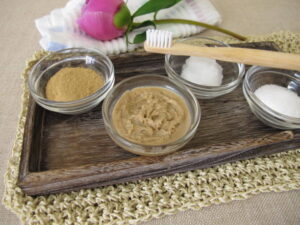
Table of Contents
ToggleIntroduction
This is why professional formulation is essential.
Thankfully, you can now make a dentist-grade paste at home. A natural, 5-ingredient toothpaste proven to strengthen teeth safely.
Why should you keep reading? Discover the only remineralizing toothpaste recipe you’ll need. This isn’t just another generic tutorial. This is a detailed guide based on dental expertise that provides:
The exact 5-ingredient recipe and the physics behind the need of each of these parts to be fixed.
Step-by-step instructions to ensure perfect consistency and maximum effectiveness.
Crucial safety tips to avoid common mistakes that can damage enamel.
Quit trying untested techniques. Discover an easy way to help repair your teeth naturally. Here’s how to make the toothpaste.
Why Trust This Remineralizing Toothpaste Recipe? (The Science of Repair)
Dr. Reed’s Credentials:
Dr. Reed is a dentist with over 10 years of experience. He focuses on preventing problems and using the gentlest treatments possible. She has extensively researched biomimetic materials and natural adjuncts to oral care.
I want to help you keep your teeth healthy at home with methods that are safe and work well. This mix uses ingredients that are proven to help your teeth repair themselves. The core principle behind this recipe is biomimicry—imitating the body’s natural processes.
A 2013 study found that a calcium phosphate treatment can fix tooth enamel and might work even better than fluoride. This remineralizing toothpaste recipe applies that very science, using readily available, natural ingredients to harness your mouth’s natural healing power.
👉Call to Action: Are you willing to leave traditional toothpaste? Read on to find out how all the ingredients combine with each other to reinforce your smile.
How Remineralization Works: Can You Really Reverse Decay?
A cavity isn’t formed overnight. It begins as a white spot lesion—a sign of demineralization where the enamel is weak but intact. The damage at this point is reversible. You can reverse early weakening, but you can’t fill in a hole naturally. Once it has become a cavity it is a dentist to repair.
This Remineralizing Toothpaste Recipe helps repair early tooth damage (those white spots) and stop them from becoming cavities. For it to work, you need to use it consistently—it’s a long-term solution, not a quick fix.
The most important remineralizing tooth ingredients (and their reasons)
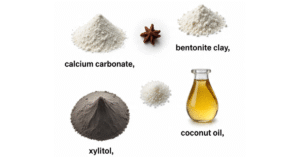
This dentist-formulated remineralizing toothpaste recipe is a synergy of specific ingredients chosen for their specific roles in oral health. Here’s the science behind each one.
1. The Power of Bentonite Clay in Toothpaste
2. Xylitol Toothpaste Benefits: A Cavity-Fighting Superstar
Xylitol isn’t just a natural sweetener; it’s a powerful dental therapeutic agent. Cavity-causing bacteria (S. mutans) consume xylitol but cannot metabolize it. This basically starves the bad bacteria which prevents them to produce acid and clinging to your teeth.
Regular use of xylitol has been shown in numerous studies, including a review in the International Journal of Dentistry, to significantly reduce caries incidence.
3. Using Coconut Oil for Oral Health
4. Calcium Carbonate: The Essential Mineral
This is the cornerstone of the remineralization process. Calcium carbonate is an effective, safe and readily available source of bioavailable calcium ions. These minerals are used by your saliva together with phosphate to restore and fortify the protective enamel on your tooth. We use it as the primary active remineralizing agent. The National Institutes of Health (NIH) confirms calcium’s critical role in maintaining vital body functions, including dental health. We use it as the primary active remineralizing agent.
5. Clove Oil: For Gum Health & Sensitivity
A Note on Diatomaceous Earth: Abrasion vs. Benefit
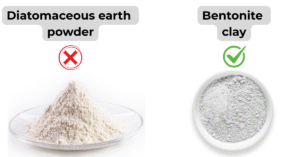
You may have seen recipes featuring diatomaceous earth (DE) for its purported cleaning power. However, Dr. Reed advises extreme caution. “Over time, DE can be gritty and slowly scratch your tooth enamel. These tiny scratches can make your teeth more likely to get stained and develop cavities. Bentonite clay is a far safer and equally effective alternative for gentle polishing,” she explains. Our formulation prioritizes safety above all.
👉Call to Action: Got these five strong ingredients- now it’s time to mix your potent Remineralizing Toothpaste Recipe!
How to Remineralize Teeth Without Fluoride, Naturally
Provide Ample Building Blocks: Our product uses a special form of calcium that your saliva can easily use to help repair teeth.
Create a Healthy Oral Environment: Xylitol and coconut oil help fight the bad bacteria in your mouth that cause cavities. This allows your mouth to return to a neutral state, which helps your teeth repair themselves.
Is Fluoride-Free Remineralizing Toothpaste Effective?
Fluoride is great for strengthening teeth, but it’s not the only way. Your teeth also need a good supply of their natural building blocks—calcium and phosphate—to repair themselves.
This fluoride-free remineralizing toothpaste is effective because it employs a dual strategy:
Direct Mineral Application: Ingredients like calcium carbonate provide a high concentration of bioavailable calcium directly to the tooth surface. Saliva cement fixes your enamel with the aid of calcium and phosphate.
Creating a Remineralization-Friendly Environment: Xylitol plays a crucial role here. It helps in keeping the mouth at a neutral pH by decreasing the number of acid producing bacteria (S. mutans). Enamel is capable of repairing in neutral or slightly alkaline environment and not an acidic one.
Furthermore, bentonite clay helps remove the plaque biofilm that harbors these harmful bacteria, allowing the minerals to reach the tooth surface.
For those looking for a fluoride-free alternative, this Remineralizing Toothpaste Recipe is a great choice. Instead of fluoride, it uses natural ingredients that work like bricks and mortar to repair your teeth and protect them from decay.
👉 Call to Action: Decided to try the natural approach? The following is what you should use to prepare your own toothpaste that is free of fluoride.
Equipment You’ll Need
A glass or ceramic bowl is the best
A non-metal spatula or wooden spoon
A small glass jar or silicone tube for storage
A small whisk (optional)
How to Make Remineralizing Toothpaste: A Step-by-Step Guide
Just 5 Ingredients
2 tablespoons Calcium Carbonate Powder
1 tablespoon Bentonite Clay
2 tablespoons Xylitol Powder
3 tablespoons Fractionated Coconut Oil (stays liquid)
clove essential oil (safe to ingest) in drops (10-15)
Step 1: Combine Dry Ingredients
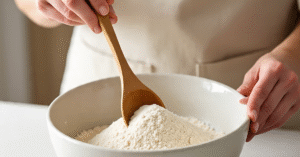
Whisk all the dry powders together in a glass bowl until well mixed. This stop clumping.
Step 2: Add Wet Ingredients
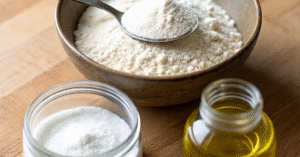
Add the oils little by little. Blend and smash all it against the bowl till it becomes smooth.
Step 3: Adjust Consistency
Get the right consistency. In case it is too thick, drop in a little coconut oil. In case of runny, put a pinch more clay or calcium powder.
Step 4: Store Properly
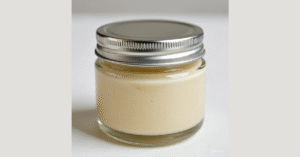
Scoop your finished toothpaste into a clean glass jar. In case you want a tube, a reusable silicone toothpaste tube is used.
How to Use & Store Your Homemade Toothpaste for Best Results?
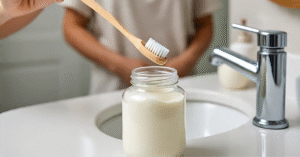
To Use: Dip a dry toothbrush into the jar or dispense a pea-sized amount from a tube. Brush carefully for two minutes each day.
To Store: Keep it in a closed container in a cool, dry place. When well stored, it will last to 3 months. The oil can come to the surface a little; stir it briefly before use.
👉 Call to Action: Use oral care as a ritual. Take every day for 4-6 weeks to begin getting less sensitive and smooth teeth.
Safety Guide: Who Should Avoid This & Why
Consult Your Dentist: Before you try a new toothpaste or mouthwash, check with your dentist first. This is especially important if you have cavities, fillings, crowns, or gum problems.
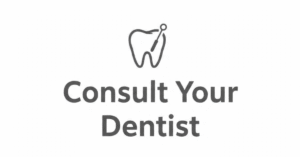
Not for Young Children: This recipe is not recommended for children under 6 due to the potency of essential oils and risk of ingestion.

Patch Test: Try a small amount on your arm first to make sure it doesn’t irritate your skin.
Manage Expectations: This is a preventive aid, not a cure for existing cavities.
FAQ: Your Toothpaste Remineralizing Toothpaste Questions, answered.
Q1. Can This Homemade Toothpaste for Cavities Actually Heal Them?
This is a critical distinction to understand. Many people search for an effective homemade toothpaste for cavities, hoping to reverse decay naturally. The following recipe is intended to do so–although with one important exception.
It can reverse the earliest stage of tooth decay by putting minerals back into the enamel. However, once the enamel has fully collapsed and a true cavity (a physical hole) has formed, no homemade toothpaste for cavities can repair it, and professional treatment from a dentist becomes necessary. Use this to prevent little problems from becoming.
Q2. Is Homemade Toothpaste Safe?
Yes, absolutely! You can make your own remineralizing toothpaste recipe at home, but it’s important to use safe ingredients and be careful when using it. The key is the formulation. Unlike some DIY recipes that use abrasive ingredients like charcoal or baking soda, this dentist-formulated recipe is specifically designed to be both safe and effective.
It uses gentle, remineralizing ingredients like calcium carbonate and bentonite clay. But remember, it’s best to check with your dentist first if you have any dental problems. Not safe for children.
Q3. How long does it take to see results?
Be consistent. Get less sensitive within a couple of weeks. With regular use and less sugar in your diet, you should start to see whiter spots in 3 to 6 months.
Q4. Can This Natural Remineralizing Toothpaste Recipe Help with Cavities?
This is critical to understand: No. This recipe can help reverse the earliest stage of decay, known as a pre-cavity or white spot lesion, by replenishing its minerals. Once the enamel is broken and a cavity has formed, toothpaste cannot fix it. You need to see a dentist. This recipe could however prevent a small cavity to expand.
Q5. Is this safe for children?
This specific formulation is not recommended for young children (under 6) due to the clove essential oil, which is potent and not meant to be swallowed. Use a fluoride-free toothpaste for children that is approved by a dentist.
Q6. Which Toothpaste is 100% Natural?
Q7. How Does This Compare to Dr. Axe’s Toothpaste Recipe?
Dr. Axe’s popular recipe is an excellent starting point. Our recipe differs by:
Using Calcium Carbonate as a primary, highly bioavailable calcium source instead of relying solely on clay.
Excluding Baking Soda due to its potential abrasiveness and taste concerns for many users.
Including Xylitol as a dedicated anti-cavity agent, which is backed by robust scientific evidence. It is highly effective yet very gentle.
Q8. Why no baking soda or charcoal?
Dr. Reed points out that both baking soda and activated charcoal are very abrasive. If you use them for too long, they can scrub away your tooth’s protective layer. This can lead to sensitive teeth and more cavities. Our recipe prioritizes ingredients that clean and remineralize without abrasion.”
The Bottom Line: Is this Recipe Right to You?
This dentist-formulated remineralizing toothpaste recipe naturally strengthens enamel and improves oral health. Good with adults who desire to avoid cavities, sensitivity, and cruel chemicals.
👉 Final Call to Action: Take the first step towards a naturally healthier smile. Gather the five simple ingredients this weekend and empower your oral care routine. Your teeth will thank you.
To maximize the effectiveness of this toothpaste use it with the correct diet. Learn 12 best foods to remineralize your teeth and create an entire oral health regimen on the inside out.
We are interested in knowing what your outcomes were! Post your experience in the comment section below.
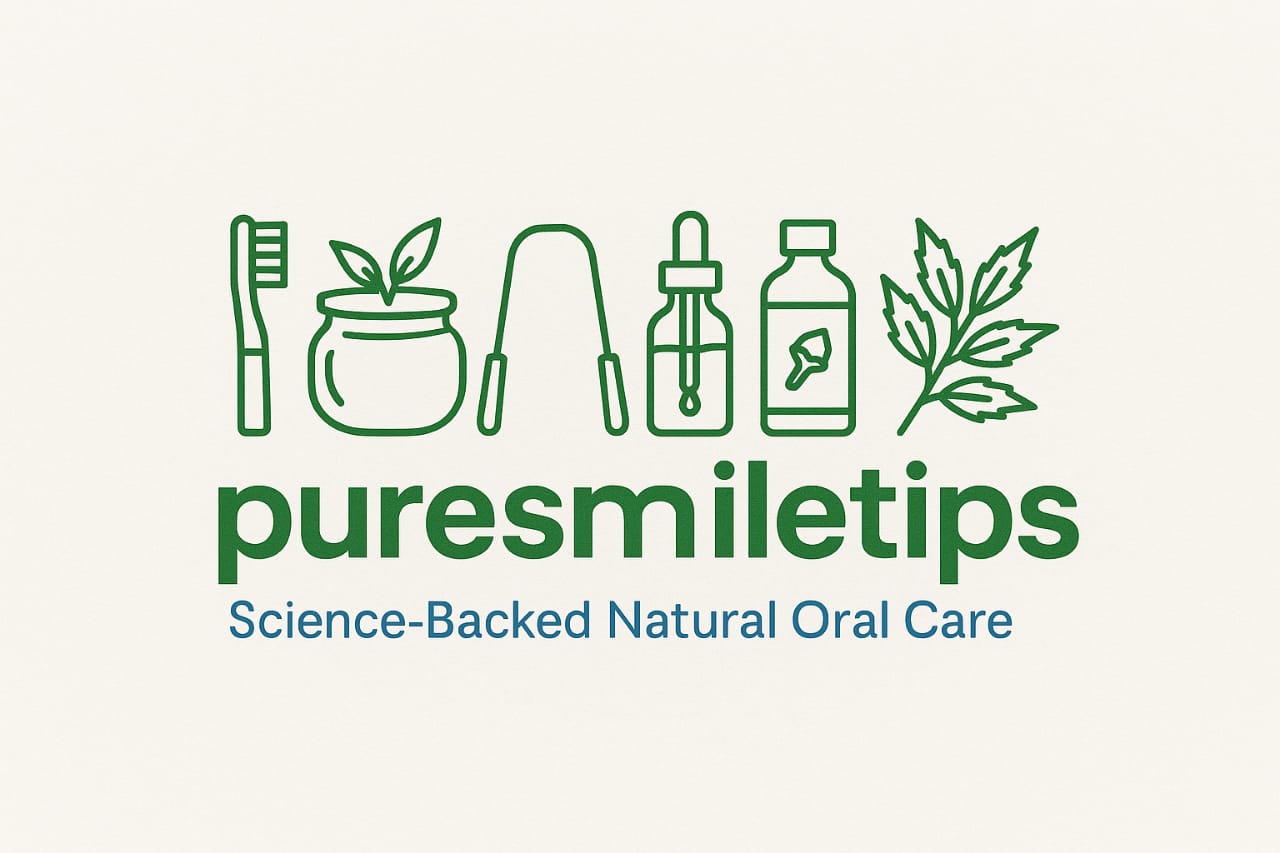
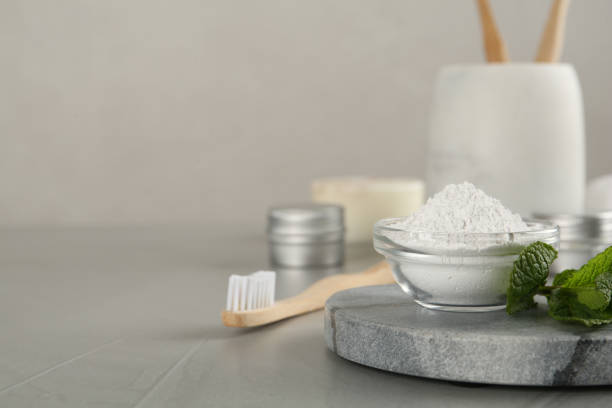
I have been surfing online more than 3 hours today, yet I never discovered any interesting article like yours. It is beautiful price sufficient for me. In my view, if all webmasters and bloggers made good content as you did, the internet will be much more useful than ever before.
Thank you so much for this incredibly kind and thoughtful comment. It truly means a lot to hear that you found the article valuable after such a long search. You’ve made my day! I’m committed to creating more useful content, and I’m thrilled to have you as a reader.